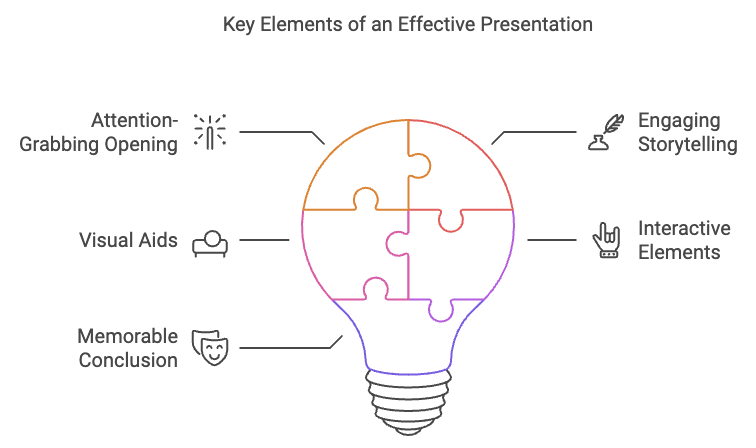Guide Your Audience Through 'The Journey', Not a Detailed 'Roadmap'

Have you ever sat through a presentation that felt more like a grueling trek through an endless sea of facts and figures? We've all been there. But what if I told you there's a better way? A way to make your presentations not just bearable, but actually engaging and memorable?
Think of your presentation like guiding your audience on a journey. You're taking them from the beginning to the end, showing them the sights along the way. But here's the million-dollar question:
Should you mention every fact, figure, or detail?
Or
Should you point out the landmarks, the turning points, the crucial things to look for?
If you chose the latter, congratulations! You're on the right track to creating a presentation that will captivate your audience and leave a lasting impression. Let's dive into how you can transform your presentation from a boring roadmap into an exciting journey.

Step 1: Identify Landmarks
Just as every great journey has its memorable landmarks, your presentation should have key points that grab your audience's attention. These are your 'landmarks' - the crucial elements of your narrative that you want your audience to remember long after your presentation is over.
How to do it:
- Brainstorm the main ideas of your presentation
- Ask yourself: "If my audience remembers only three things, what should they be?"
- Highlight these key points in your presentation outline
Example:
If you're presenting on climate change, your landmarks might be:
- The current state of global warming
- The potential consequences if we don't act
- Actionable steps we can take to make a difference
Step 2: Plot Your Route
Now that you've identified your landmarks, it's time to chart your path. This is where you create your storyline, connecting your 'landmarks' through a seamless and logical flow. Remember, just like a good story, your presentation should have a clear beginning, middle, and end.
How to do it:
- Arrange your landmarks in a logical order
- Think about how to transition smoothly from one point to the next
- Consider using a narrative structure (e.g., problem-solution, chronological, etc.)
Example:
For our climate change presentation:
- Begin with an attention-grabbing fact about the current state of global warming
- Transition into the potential consequences, building tension
- End with a call to action, presenting the steps we can take
Step 3: Narrate, Don't Read
Imagine a tour guide who simply reads facts from a guidebook. Boring, right? The same applies to your presentation. Don't just read from your slides. Instead, present your 'landmarks' with passion and feeling, adding context, examples, and insights.
How to do it:
- Use your slides as prompts, not a script
- Practice your presentation so you're comfortable with the material
- Add personal anecdotes or relevant examples to bring your points to life
Example:
Instead of reading "Global temperatures have risen by 1.1°C since 1880," you might say:
"Imagine if your body temperature rose by just 1.1°C. You'd have a fever and feel pretty awful, right? Well, that's exactly what's happening to our planet..."
Step 4: Create Visual Imprints
People remember what they see more than what they hear. Make your slides visually appealing and memorable. But remember, less is more. Avoid clutter and keep your slides simple yet impactful.
How to do it:
- Use high-quality images that relate to your points
- Create simple, clear charts or infographics
- Stick to a consistent color scheme and font
- Use the 5/5/5 rule: no more than 5 bullet points per slide, 5 words per bullet point, and 5 text-heavy slides in a row
Example:
For the climate change presentation, you might use:
- A striking image of a melting glacier
- A simple line graph showing temperature increase over time
- An infographic illustrating steps individuals can take to reduce their carbon footprint
Step 5: Facilitate Curiosity
Your presentation shouldn't be the end of the journey, but rather a starting point for further exploration. Encourage your audience to dive deeper into the topic.
How to do it:
- Provide resources or references for further reading
- Be prepared for a robust Q&A session
- Consider creating a handout with key points
